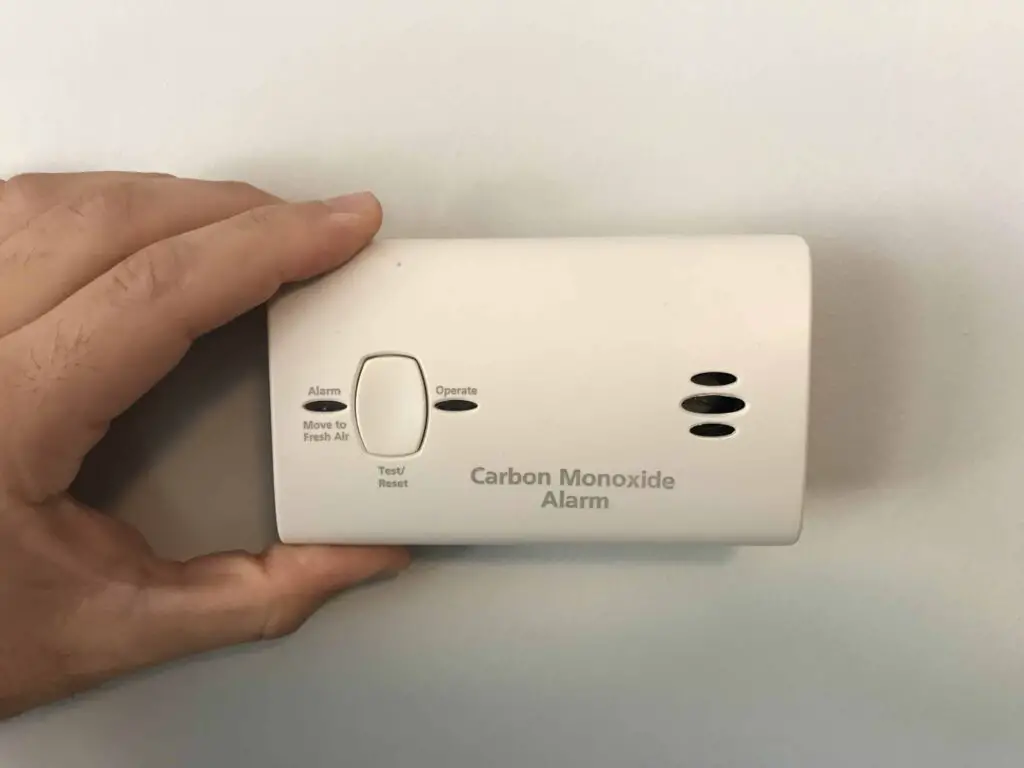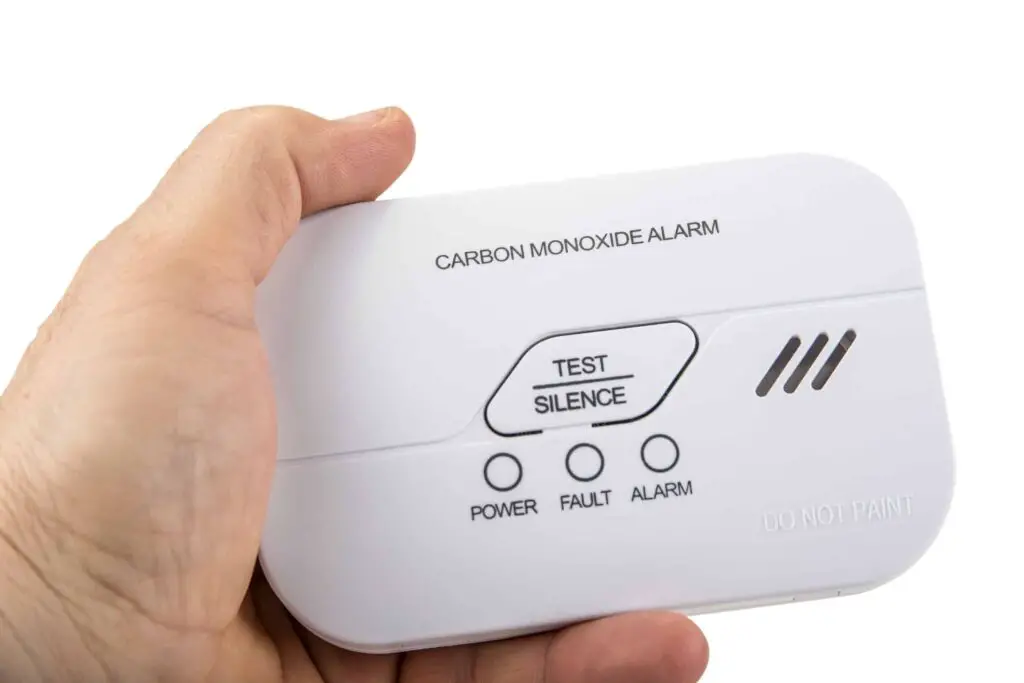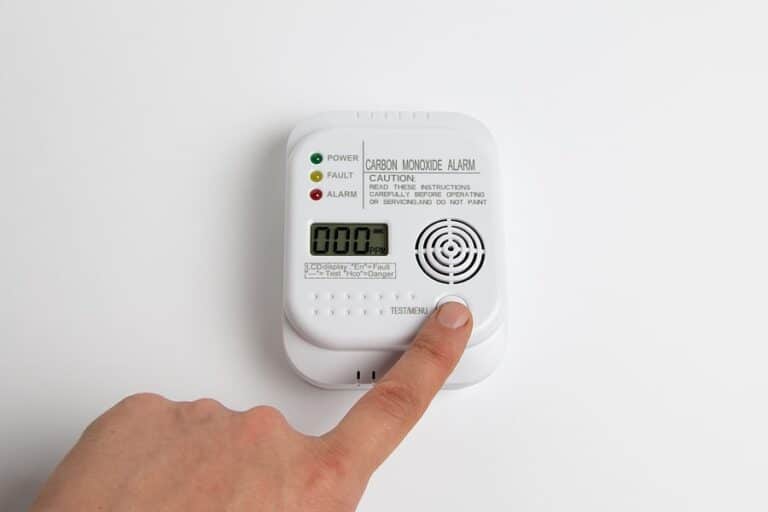Introduction
What Does A Carbon Monoxide Detector Sound Like: Carbon monoxide (CO) is a colorless, odorless, and tasteless gas that is produced by the incomplete combustion of fossil fuels such as coal, oil, and natural gas. It is highly toxic and can be deadly if inhaled in high concentrations. Because it is impossible to detect with our senses, a carbon monoxide detector is a crucial device that can save lives by alerting us to the presence of this dangerous gas.
So, what does a carbon monoxide detector sound like. Well, when a carbon monoxide detector detects elevated levels of CO in the air, it emits a loud and distinct alarm sound. This sound is designed to be attention-grabbing and easily recognizable, ensuring that people are alerted to the potential danger and can take immediate action to protect themselves.
The sound produced by a carbon monoxide detector is often described as a series of beeps or chirps. The specific pattern and frequency of the beeps may vary depending on the brand and model of the detector, but they are typically loud and piercing to ensure that they can be heard even from a distance or through closed doors.
Some carbon monoxide detectors also feature additional visual indicators, such as flashing lights or digital displays, to provide a visual warning in addition to the audible alarm. This can be particularly helpful for individuals with hearing impairments or in situations where the alarm may not be easily heard, such as when sleeping or in a noisy environment.

Does a carbon monoxide alarm sound continuously?
Yes, a carbon monoxide alarm does sound continuously when it detects the presence of carbon monoxide gas. Carbon monoxide (CO) is a colorless, odorless, and tasteless gas that is produced by the incomplete combustion of fossil fuels such as coal, oil, and natural gas. It is highly toxic and can be deadly if inhaled in high concentrations. Therefore, it is crucial to have a carbon monoxide alarm installed in your home to alert you to the presence of this dangerous gas.
When a carbon monoxide alarm detects carbon monoxide gas in the air, it will emit a loud, continuous alarm sound to alert you to the potential danger. This sound is designed to be loud enough to wake you up from sleep and to be heard throughout your home. The continuous alarm sound is important because it ensures that you are aware of the presence of carbon monoxide and can take immediate action to protect yourself and your family.
It is important to note that carbon monoxide alarms are designed to detect low levels of carbon monoxide over a long period of time, as well as high levels of carbon monoxide over a short period of time. This means that even if you are exposed to low levels of carbon monoxide for an extended period, the alarm will still sound continuously to alert you to the potential danger.
Carbon monoxide alarms are typically powered by batteries or by being plugged into an electrical outlet. It is important to regularly test your carbon monoxide alarm to ensure that it is functioning properly and to replace the batteries as needed. Additionally, it is recommended to have carbon monoxide alarms installed on every level of your home and near sleeping areas to provide maximum protection.
Are carbon monoxide detectors silent?
Carbon monoxide detectors are an essential safety device that every home should have. They are designed to detect the presence of carbon monoxide gas, which is odorless and colorless, making it impossible to detect without the help of a detector. These devices are crucial in preventing carbon monoxide poisoning, which can be fatal if left undetected.
When it comes to the question of whether carbon monoxide detectors are silent, the answer is both yes and no. Carbon monoxide detectors typically have two types of alarms: audible and visual. The audible alarm is designed to emit a loud sound when it detects high levels of carbon monoxide in the air. This is to alert the occupants of the building to evacuate immediately and seek fresh air. The sound is often described as a loud beeping noise, similar to a smoke alarm.
However, carbon monoxide detectors also have a visual alarm, which is usually in the form of flashing lights. These lights are meant to provide a visual indication that carbon monoxide is present in the environment. The purpose of the visual alarm is to ensure that individuals with hearing impairments or those who may be sleeping are alerted to the presence of carbon monoxide.
It is important to note that not all carbon monoxide detectors have a visual alarm. Some models may only have an audible alarm, while others may have both audible and visual alarms. The type of alarm system a carbon monoxide detector has will depend on the specific model and brand.
How long does a carbon monoxide alarm sound?
A carbon monoxide alarm is designed to detect the presence of carbon monoxide gas in the air and alert individuals to its presence. When the alarm detects carbon monoxide, it will emit a loud sound to warn occupants of the potential danger. The duration of the alarm sound can vary depending on the specific model and manufacturer.
Most carbon monoxide alarms are designed to sound for a minimum of 5 minutes when activated. This duration allows for sufficient time for individuals to recognize the alarm, evacuate the area, and seek safety. However, some alarms may continue to sound for a longer period of time, typically up to 15 minutes, to ensure that occupants are adequately alerted to the presence of carbon monoxide.
It is important to note that the duration of the alarm sound may also be influenced by the level of carbon monoxide detected. In some cases, if the concentration of carbon monoxide is particularly high, the alarm may continue to sound until the source of the gas is identified and addressed.
Additionally, carbon monoxide alarms may have different sound patterns or tones to differentiate them from other types of alarms, such as smoke detectors. These unique sound patterns can help individuals quickly identify the specific type of alarm and respond accordingly.
It is crucial to regularly test carbon monoxide alarms to ensure they are functioning properly and to familiarize oneself with the sound and duration of the alarm. This can help individuals respond effectively in the event of a carbon monoxide leak or buildup.
Do carbon monoxide detectors just beep?
Carbon monoxide detectors are essential devices that help protect us from the dangers of carbon monoxide poisoning. These detectors are designed to detect the presence of carbon monoxide gas in the air and alert us when levels become dangerous. While the primary function of carbon monoxide detectors is to emit an audible alarm when carbon monoxide is detected, they also have additional features that can provide further protection and convenience.
When carbon monoxide is detected, carbon monoxide detectors typically emit a loud, high-pitched beep to alert occupants of the potential danger. This beep is designed to be loud enough to wake people up from sleep and to be heard throughout the home. The purpose of this alarm is to prompt immediate action, such as evacuating the premises and calling emergency services.
However, carbon monoxide detectors may also have additional features that go beyond just beeping. Some detectors have built-in digital displays that show the current carbon monoxide levels in parts per million (ppm). This can provide valuable information about the severity of the situation and help occupants make informed decisions about whether to evacuate or take other precautions.
In addition to beeping and displaying carbon monoxide levels, some detectors may also have features such as voice alerts or smartphone notifications. Voice alerts can provide spoken warnings in addition to the audible beep, which can be especially helpful for individuals with hearing impairments. Smartphone notifications allow users to receive alerts and monitor carbon monoxide levels remotely, providing an extra layer of convenience and peace of mind.
How do you know if there is carbon monoxide?
Carbon monoxide (CO) is a colorless, odorless, and tasteless gas that is produced by the incomplete combustion of fossil fuels such as coal, oil, and natural gas. It is often referred to as the “”silent killer”” because it is virtually impossible to detect without the use of specialized equipment. However, there are several signs and symptoms that can indicate the presence of carbon monoxide in your environment.
One of the most common symptoms of carbon monoxide poisoning is headache. This is because carbon monoxide binds to the hemoglobin in your blood, reducing its ability to carry oxygen to your brain. As a result, you may experience a dull, throbbing headache that is often accompanied by dizziness and confusion.
In addition to headaches, carbon monoxide poisoning can also cause nausea, vomiting, and chest pain. These symptoms are often mistaken for the flu or food poisoning, as they are similar to the common symptoms of these conditions. However, if you experience these symptoms and they improve when you leave the area, it is possible that carbon monoxide is the cause.
Another sign of carbon monoxide is a yellow or orange flame on gas appliances. Normally, the flame on a gas stove or heater should be blue. If you notice that the flame is a different color, it could indicate that carbon monoxide is being produced. Additionally, if you see soot or a buildup of moisture on windows or walls near gas appliances, it may be a sign that carbon monoxide is present.
It is important to note that carbon monoxide is a highly toxic gas that can be fatal if inhaled in high concentrations. If you suspect that there is carbon monoxide in your environment, it is crucial to take immediate action. Open windows and doors to ventilate the area, turn off any gas appliances, and evacuate the premises. Contact your local fire department or a professional to test for carbon monoxide and ensure that your home or workplace is safe.
The sound of a carbon monoxide detector can be described as a loud, high-pitched alarm that is designed to grab your attention and alert you to the presence of carbon monoxide gas. It is often described as a continuous beeping or chirping sound that is hard to ignore. The purpose of this sound is to ensure that you are aware of the potential danger and take immediate action to protect yourself and others.
Carbon monoxide detectors are designed to emit a distinct sound that is different from other household alarms, such as smoke detectors or burglar alarms. This is because carbon monoxide is a silent and odorless gas, making it difficult to detect without the help of a detector. The sound of a carbon monoxide detector is specifically engineered to be loud and attention-grabbing, so that it can be heard even if you are asleep or in another part of the house.
It is important to familiarize yourself with the sound of your carbon monoxide detector and know what to do when you hear it. This could include evacuating the premises, opening windows for ventilation, and contacting emergency services. Remember, carbon monoxide is a deadly gas that can cause serious health problems or even death, so it is crucial to take any alarm from your detector seriously and respond promptly.
What is the typical noise emitted by a carbon monoxide detector?
A carbon monoxide detector typically emits a loud and piercing alarm sound when it detects the presence of carbon monoxide. The noise is designed to be attention-grabbing and easily distinguishable from other sounds in the environment. It is often described as a high-pitched beeping or chirping sound that repeats at regular intervals.
This distinctive noise is intentionally designed to alert occupants of a building to the potential danger of carbon monoxide poisoning. It is important to note that the specific sound emitted by a carbon monoxide detector may vary depending on the brand and model. However, most detectors adhere to a standardized sound pattern to ensure consistency and effectiveness in warning individuals of the presence of this deadly gas.
Can you explain the auditory signal produced by a carbon monoxide detector?
When it comes to the auditory signal produced by a carbon monoxide detector, it is important to understand that these devices are designed to alert individuals of the presence of carbon monoxide gas, which is odorless and colorless. The auditory signal serves as a crucial warning mechanism to ensure the safety of those in the vicinity.
The sound emitted by a carbon monoxide detector can vary depending on the specific model and manufacturer. However, most carbon monoxide detectors produce a loud and distinct alarm sound when they detect the presence of carbon monoxide gas. This sound is typically a series of loud beeps or a continuous high-pitched tone. The purpose of this sound is to grab the attention of individuals in the area and prompt them to take immediate action to address the potential danger.
It is important to note that the auditory signal produced by a carbon monoxide detector is intentionally designed to be loud and attention-grabbing. This is because carbon monoxide is a highly toxic gas that can be deadly if not detected and addressed promptly. The loud alarm sound ensures that individuals are alerted to the presence of carbon monoxide and can take the necessary steps to protect themselves and others.
What sound does a carbon monoxide detector make when it detects carbon monoxide?
When a carbon monoxide detector detects carbon monoxide, it typically emits a loud and continuous alarm sound. This sound is designed to be highly audible and attention-grabbing, as the presence of carbon monoxide can be extremely dangerous and potentially life-threatening. The alarm sound is often described as a high-pitched beeping or chirping noise that repeats at regular intervals.
The purpose of this distinct sound is to alert occupants of a building or home to the presence of carbon monoxide in the air. Carbon monoxide is a colorless and odorless gas that can be produced by faulty heating systems, gas appliances, or blocked chimneys. It is known as the “”silent killer”” because it is virtually undetectable without the use of a carbon monoxide detector.
Therefore, the alarm sound of a carbon monoxide detector serves as a crucial warning signal, allowing individuals to take immediate action and evacuate the premises. It is important to familiarize yourself with the specific alarm sound of your carbon monoxide detector and to test it regularly to ensure it is functioning properly. Remember, carbon monoxide is a serious threat, and having a working detector can save lives.
How would you characterize the alarm sound of a carbon monoxide detector?
The alarm sound of a carbon monoxide detector can be described as a loud, continuous, and high-pitched noise. It is designed to be attention-grabbing and easily distinguishable from other household sounds. The purpose of this distinct alarm sound is to alert occupants of the presence of carbon monoxide, which is a colorless and odorless gas that can be extremely dangerous.
The alarm sound is often described as a series of beeps or chirps that repeat in a pattern. This pattern may vary depending on the brand and model of the carbon monoxide detector, but it typically consists of a sequence of short beeps followed by a brief pause. This repetitive pattern helps to ensure that the alarm is noticeable and does not blend in with other sounds in the environment.
It is important to note that the alarm sound of a carbon monoxide detector should never be ignored or taken lightly. If the alarm goes off, it is crucial to immediately evacuate the premises and seek fresh air. Carbon monoxide poisoning can be life-threatening, and prompt action is necessary to ensure the safety and well-being of everyone in the vicinity.

Conclusion
A carbon monoxide detector emits a distinct sound when it detects the presence of carbon monoxide gas. This sound is designed to alert individuals in the vicinity of the potential danger and prompt them to take immediate action. The specific sound emitted by a carbon monoxide detector can vary depending on the brand and model, but it is typically a loud and continuous alarm that is difficult to ignore.
Carbon monoxide is a colorless and odorless gas that can be extremely dangerous if inhaled in high concentrations. It is produced by the incomplete combustion of fossil fuels, such as gas, oil, and coal. Because carbon monoxide is virtually undetectable without the use of a detector, having a functioning carbon monoxide detector in your home or workplace is crucial for ensuring the safety of yourself and others.
When a carbon monoxide detector detects the presence of carbon monoxide gas, it triggers an alarm to alert individuals of the potential danger. The sound emitted by the detector is intentionally designed to be loud and attention-grabbing, as the immediate evacuation of the premises is necessary to prevent serious health complications or even death. It is important to familiarize yourself with the sound of your carbon monoxide detector so that you can recognize it in the event of an emergency.
A carbon monoxide detector emits a distinct sound when it detects the presence of carbon monoxide gas. This sound serves as a warning to individuals in the vicinity to evacuate the area and seek fresh air immediately. Carbon monoxide is a silent killer, and having a functioning carbon monoxide detector is essential for protecting yourself and your loved ones from its harmful effects. Remember to regularly test and maintain your carbon monoxide detector to ensure its effectiveness in detecting this deadly gas.

